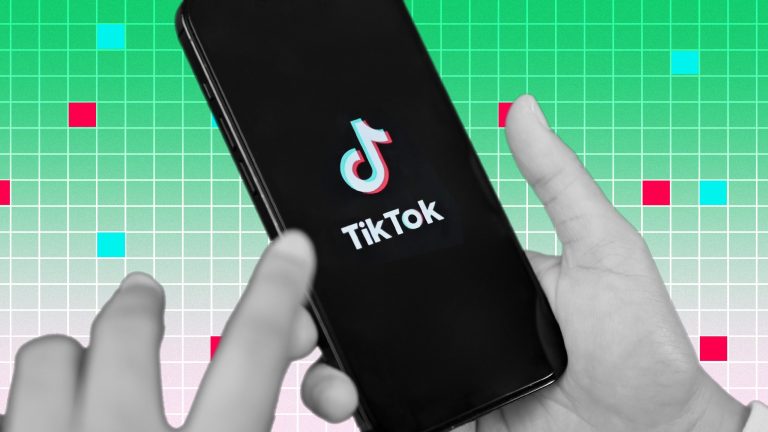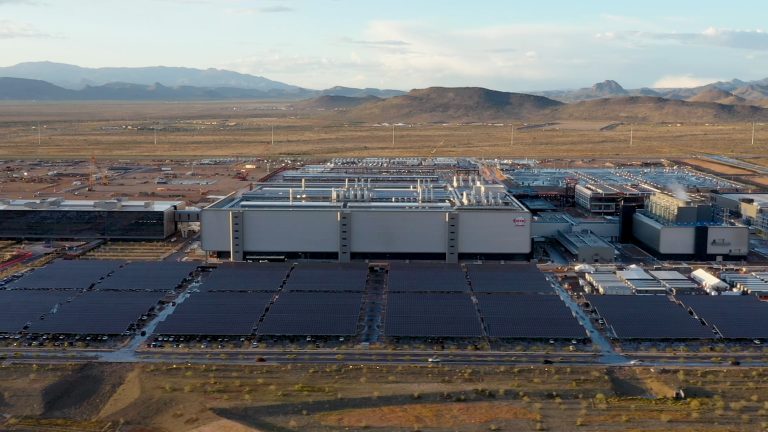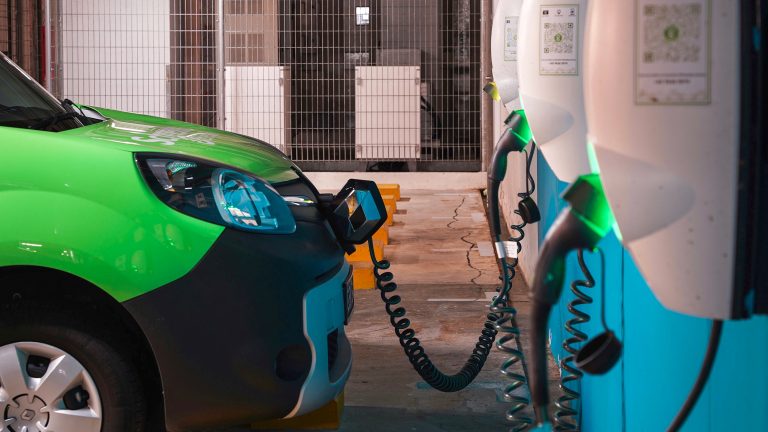In late March, Decentraland, the most hyped blockchain-based metaverse, hosted its own Fashion Week, a monument to virtual art, music, and couture that saw a total attendance of 108,000 unique visitors over four days.
The event was, in some sense, an endorsement by mainstream brands of blockchain technology. Esteé Lauder gave out 10,000 free NFTs — nonfungible digital assets — of glowing wearables for avatars. Dolce & Gabbana hosted a parade showing off new digital wares. The musical artist Grimes performed a DJ set as an avatar designed by the fashion house Auroboros. The extravaganza took place in the platform’s so-called Luxury Fashion District, where a single 16-square-meter parcel of land can sell for upward of $15,000.
But the flurry of activity surrounding Fashion Week belied the reality of Decentraland: around two years after Argentine developers launched this metaverse, it remains a mostly unpopulated and underdeveloped world. Outside of events like the buzzy Fashion Week, Decentraland receives only about 25,000 visitors a day, according to its own internal data.
That lack of engagement isn’t deterring investors from scrambling to buy up Decentraland property or from striking major brand partnerships. The platform was created with the ethos of community-based governance and accessibility, but many of the 10 early and current Decentraland employees, users, and digital real estate investors who spoke with Rest of World suggested that the influx of capital threatens the egalitarian future of the digital utopia.
“I simply do not see Decentraland as a viable platform to create for unless things change drastically,” said one metaverse user, Sin Tachikawa, who spoke on condition that Rest of World use his online name. “The cost is just too high to do anything.”
Decentraland was first developed in 2017 by a group of young Argentine software engineers who envisioned a user-governed virtual world where people could develop experiences on plots of pixelated land, from art shows to poker games, through customized avatars. Through the Ethereum blockchain, they could buy and sell land using a special token called Mana. All decision-making, which can range from creating specialized districts to subsidizing low-cost rentals to banning offensive terms, would be carried out collectively under a decentralized autonomous organization, or DAO. The DAO’s decisions would then be implemented by a company-appointed “foundation.”
In an interview with Rest of World in 2020, the Decentraland foundation leader Agustín Ferreira said the founders initially saw their metaverse project as a gift to the world. “Big corporations like Facebook are taking advantage of all our data,” he said. “With Decentraland, we have a better way to shape the reality of how we treat users.”
“I simply do not see Decentraland as a viable platform to create for unless things change drastically.”
Metaverses such as Second Life long predated Decentraland, but the project was the first to incorporate blockchain technology, meaning that the platform would be decentralized and distributed among its users.
From launch, the project struggled with engagement. In its first year, daily users, mostly crypto enthusiasts, numbered in the hundreds, according to Ferreira. Meanwhile the value of the Mana consistently hovered at under $1.
But what the platform lacked in usership it made up for in community. Ryan Keiffer, who joined in February 2021, told Rest of World, “It was super close-knit, and you knew almost everybody. It definitely had a much more small town vibe to it.”
Then, in October 2021, Facebook announced it was rebranding as Meta, underscoring the company’s investment in the metaverse. A term that had existed in relative obscurity exploded into mainstream consciousness. Soon after, many of the world’s biggest tech companies joined the metaverse hype cycle as well, including Microsoft, Nvidia, and Samsung.
“Facebook changed things — it’s a monster” said Belén Ray, an Argentine software engineer currently working at Decentraland.
The sudden global spotlight on metaverse upended the day-to-day reality of Decentraland. The value of Mana jumped 287% the day after Facebook’s rebrand, reaching a high of $5.48 in November 2021. Investors and brands quickly followed.
“All of a sudden, everybody on the planet was trying to figure out how to go buy a piece of the metaverse,” said Janine Yorio, the CEO of Everyrealm, a metaverse investment and development firm. “Platforms [like Decentraland] have received a disproportionate amount of speculative interest and investment dollars,” she told Rest of World.
As an early Decentraland user, Keiffer saw how quickly the platform changed. More users joined, but there were even more speculators. Many “are basically land companies,” he said. “They don’t really do much else.”
Keiffer eventually joined a virtual real estate company called TerraZero as its chief metaverse officer. Its goal was to not only buy up digital land but to develop and even rent it out. The company helps users put up virtual buildings and host events on plots of land, which can require the use of Decentraland’s software developer kit. TerraZero purchased 185 parcels of virtual real estate in March, valued at almost $3 million.
The challenge within a DAO like Decentraland’s is that the voting power is commensurate with how much land or Mana people control. People in the group’s Discord server question what the impact of this type of financial influence will lead to. “Voting favors the rich,” wrote one user, Sin Tachikawa.
Tachikawa told Rest of World that while he was hopeful about the DAO concept, he soon realized the power imbalance it created. Proposed changes that would make Decentraland more competitive with other metaverse platforms, such as lowering the cost of entry for creators, are often met with negativity, thanks to the influence of investors with cash to blow. “[The voting system] does not represent the wider community of creators; it represents speculators who dumped a ton of money in early.”
Other users echoed Tachikawa, expressing concern about the disparity in the DAO, while acknowledging that the growth of the platform is owed largely to big investors and brands coming in.
Andrew Kiguel, the executive chairman of Metaverse Group, the firm that owns the land where Fashion Week took place, acknowledges a major challenge for Decentraland is onboarding new users. He said that companies moving into metaverses like Decentraland will have to take the same approach of traditional tech firms, like Google and Facebook, by creating experiences that will attract regular people and create ad revenue.
However, Decentraland is still largely empty, despite the land being owned. “I’d say 15 to 20% of Decentraland is developed,” Kiguel told Rest of World. “Generally, [the approach for investors] has been to buy and speculate that it goes up.”
“I’d say 15 to 20% of Decentraland is developed.”
Keiffer said there’s clear tension between firms that want to develop Decentraland in order to bring in more users, like TerraZero, and companies that are holding land and not doing anything with it. “If you’re not building,” he said, “you’re not part of the metaverse to have fun or make it easier for people to come in.”
He worries that investors are coming in just because they see dollar signs, which is contributing to the tracts of barren land that still persist across the platform. Even though users grew 3,300% over 2021, Decentraland’s metrics still pale in comparison to other platforms like Roblox or even Second Life, which is almost two decades old.
“It’s important, of course, for us that we don’t have ghost districts,” said Giovanna Graziosi Casimiro, a producer at Decentraland Foundation and the head of Decentraland’s Fashion Week. “The truth is that the foundation doesn’t really get involved much in the discussions of real estate,” she continued. “Whatever happens with the private owners is a private matter.”



